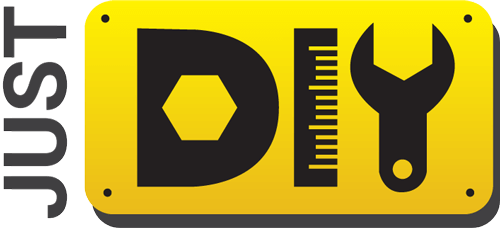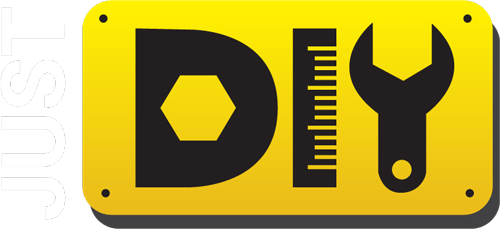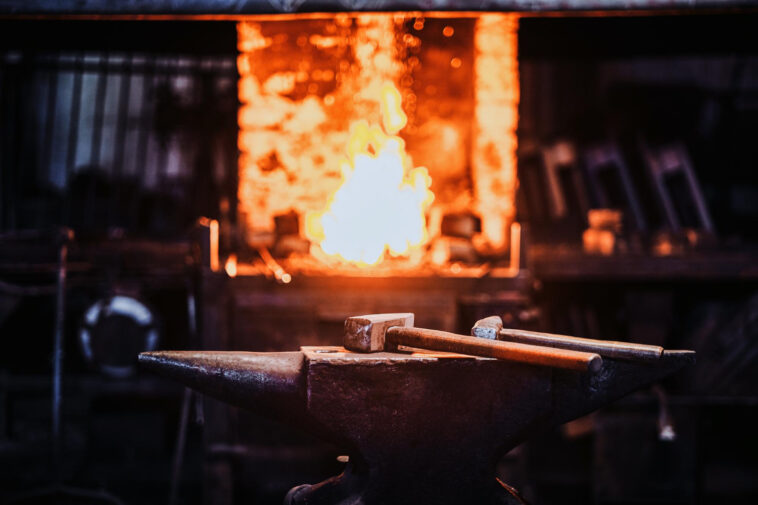DIY Forge Burner
As a passionate blacksmith, I've always cherished the timeless craft of shaping metal into functional works of art. In my journey, I've come to appreciate the pivotal role of the forge, with its beating heart being the burner. Commercially available burners can be quite pricey, and that's when I decided to dive into the world of DIY forge burners.
Building my own burner not only saved me some hard-earned cash but also provided me with invaluable insight into the inner workings of my equipment. It's a satisfying and educational endeavor that every blacksmith enthusiast should consider undertaking.
Understanding the Forge Burner
Before you start building your DIY forge burner, it's essential to understand its basic components and how they work together:
- Burner Tube: The burner tube serves as the core element where the alchemy of combustion unfolds. Here, the fuel and air commingle before they ignite, setting the stage for the transformation of this mixture into a blazing, high-temperature flame. The dimensions and design of the burner tube greatly influence the efficiency and performance of your forge.
- Fuel Source: Selecting the right fuel source is pivotal to the success of your DIY forge. You have a range of options, each with its own merits. Propane stands as the most favored choice among DIY enthusiasts due to its widespread availability and user-friendliness. Alternatively, you might consider natural gas or coke, depending on your preferences and local availability. Each fuel source comes with its unique set of considerations, such as storage, safety, and cost-effectiveness.
- Air Intake System: The air intake system plays a pivotal role in regulating the combustion process. It governs the quantity of oxygen that mingles with the fuel within the burner tube. Achieving the correct air-to-fuel ratio is paramount to attaining the desired forging temperature consistently. A well-designed air intake system ensures efficient combustion, reducing fuel wastage and minimizing environmental emissions. Factors like the size of air inlets, their placement, and any additional controls must be carefully considered to maintain precise temperature control in your forge.
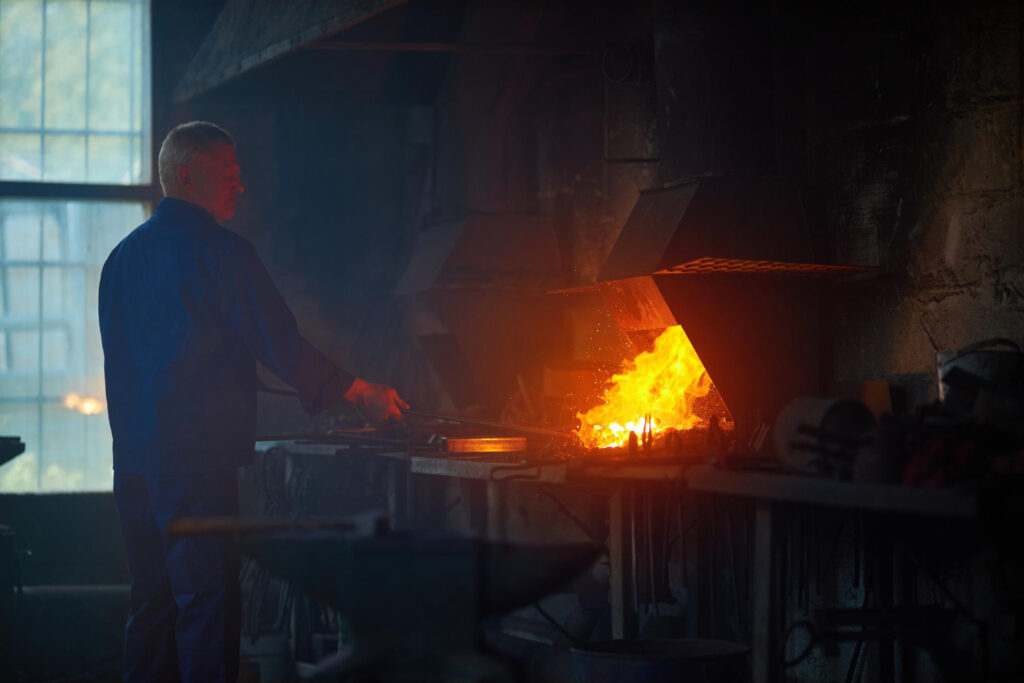
Materials and Tools You'll Need
Creating your own DIY forge burner is an exciting project, but to get started, you'll want to gather an array of materials and tools that are not only necessary but can also enhance the efficiency and safety of your forge. Here's a detailed list of what you'll need:
Materials
- 1.5-inch Steel Pipe (for the Burner Tube): The core of your forge burner, the burner tube, requires a robust and heat-resistant material. A 1.5-inch steel pipe is commonly used due to its durability and ability to withstand high temperatures.
- Propane Regulator and Hose: Propane is a popular fuel source for forges, and a regulator and hose are essential for controlling and delivering the gas to your burner safely.
- Propane Jet Burner (Venturi Burner): The heart of your diy forge burner plans, this specialized component is designed to mix propane with air efficiently and ignite it, producing a high-temperature flame.
- High-Temperature Refractory Cement: This refractory material is used to line the interior of your forge, providing insulation and withstanding extreme heat.
- Firebricks: Firebricks create a stable and heat-resistant base for your workpiece within the forge.
- Teflon Tape: Essential for sealing threaded connections and preventing gas leaks.
- Metal Pipe Fittings: Various fittings like couplings, elbows, and reducers are needed to connect and assemble the components of your burner system securely.
- Steel Plate: This may be used to fabricate a base or support structure for your forge, enhancing its stability.
Tools
- Welder (Optional): A welder can be useful for joining metal components securely, although it's not strictly necessary if you use threaded fittings and careful assembly.
- Angle Grinder: Useful for cutting and shaping metal components as needed.
- Drill and Bits: Essential for creating holes in metal components or attaching them securely.
- Pipe Wrench: Used for tightening and securing threaded connections.
- Tape Measure: Ensures accurate measurements during construction, which is crucial for the precise assembly of your forge burner.
- Safety Gear (Gloves, Safety Glasses, Ear Protection): Safety should always be a top priority when working with high-temperature materials and tools. Protective gear such as gloves, safety glasses, and ear protection is essential to keep you safe during the construction and operation of your propane forge burner diy.
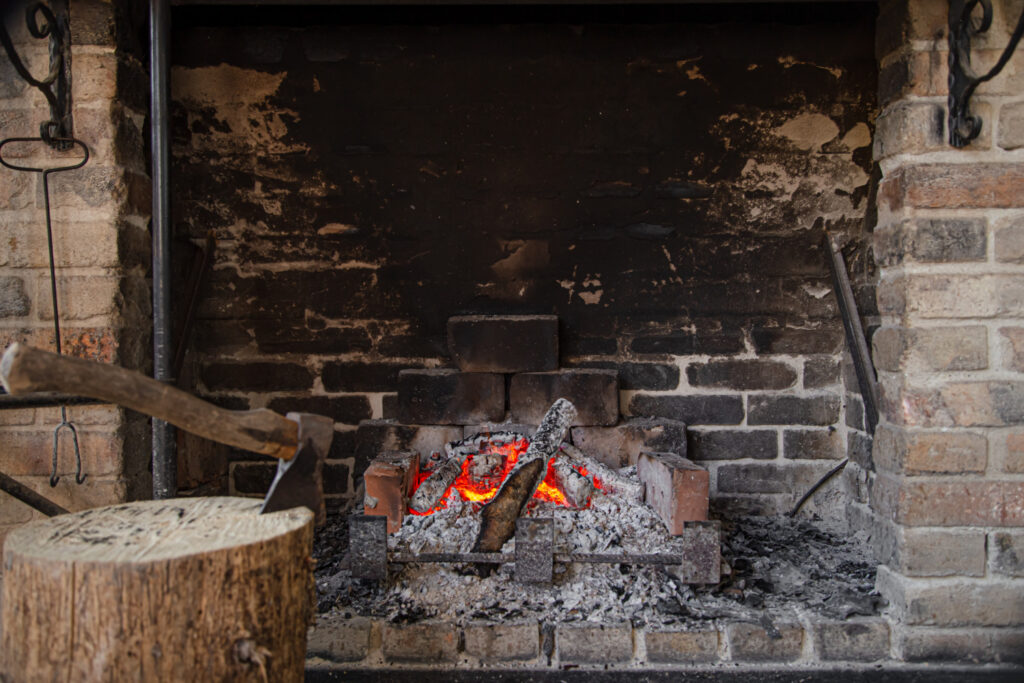
Building the Forge Burner
Let's dive into the intricacies of constructing your DIY forge burner, breaking down the process into comprehensive steps to ensure a successful project:
Step 1: Assembling the Components
Begin your journey in a well-ventilated workspace, prioritizing safety above all else.
- Attach the propane regulator securely to your propane tank, making sure the connection is tight and leak-free.
- Connect the hose to the regulator with care, ensuring a snug fit to prevent any gas leaks.
- With precision, insert the propane jet burner (Venturi burner) into one end of the 1.5-inch steel pipe. Guarantee a tight and secure fit, as this is the core of your burner assembly.
Step 2: Constructing the Burner Tube
- Measure the desired length for your burner tube, marking it clearly on the steel pipe. This length will largely depend on your specific forging requirements.
- Employ an angle grinder or hacksaw to cut the steel pipe to your desired length, ensuring accuracy and a clean edge.
- To facilitate attachment to your forge, weld or securely fasten a steel plate to one end of the burner tube, creating a sturdy flange.
- To prevent gas leaks and ensure a secure connection, apply Teflon tape to the threads of the propane jet burner. Carefully thread it into the opposite end of the burner tube.
Step 3: Creating the Air Intake System
- At the base of the burner tube, strategically drill holes for the air intake. The size and number of these holes should align with the specific design of your burner. Refer to your burner's manual or guidelines for precise measurements.
- Attach metal pipe fittings to the air intake holes, allowing for precise control over the airflow. This adjustability is crucial for maintaining the ideal air-to-fuel ratio during operation.
Step 4: Mounting the Burner
- Position the burner tube inside your forge, ensuring it is securely mounted and properly aligned for optimal performance.
- Employ high-temperature refractory cement to seal any gaps or openings between the burner tube and the forge body. This step enhances insulation and minimizes heat loss.
- Strategically place firebricks around the burner tube within the forge to establish a well-defined combustion chamber, promoting efficient heating.
- Finally, connect the propane hose to both the regulator and the propane jet burner, securing all connections meticulously to prevent gas leakage.
Safety Precautions
Prioritizing safety is paramount when engaging in DIY forge burner projects. Here's an expanded list of crucial safety precautions to keep in mind throughout your forging endeavors:
Adequate Ventilation
Working in a well-ventilated area is imperative to dissipate any potentially hazardous propane fumes. Adequate ventilation ensures that any gas buildup is minimized, reducing the risk of accidents.
Proper Safety Gear
To safeguard yourself from potential hazards, always don appropriate safety gear:
- Gloves: Protect your hands from burns and sharp edges when handling materials and operating the forge burner.
- Safety Glasses: Shield your eyes from sparks, hot metal, and debris that can be generated during forging.
- Ear Protection: Prolonged exposure to the noise generated by the forge can be harmful to your hearing, so wearing ear protection is essential.
Leak Detection
Before igniting the burner, rigorously inspect all connections and fittings for any potential gas leaks. A simple method is to apply a soapy water solution to the connections; if bubbles form, there is a leak. Address any leaks immediately to prevent dangerous situations.
Fire Safety
- Fire Extinguisher: Keep a fire extinguisher nearby at all times when using the forge. Make sure you know how to use it effectively in case of an emergency involving flames or unexpected fires.
- Flame Control: Always exercise caution when igniting the burner and regulating the flame. Ensure there are no flammable materials or liquids nearby, and maintain a safe distance from the forge.
Supervision
Never leave the forge unattended while it's operational. This is especially important to prevent accidents and to respond promptly to any unforeseen issues that may arise during forging.
The Benefits of Having Forge Burner
Having a DIY forge burner can offer a range of benefits for individuals interested in blacksmithing, metalworking, or other related crafts. Here are some key advantages of having a DIY forge burner:
- Cost Savings: Building your own forge burner can be significantly more cost-effective than purchasing a commercial forge. You can often source materials and components at a lower cost, especially if you already have some tools and equipment.
- Customization: DIY forge burners allow you to customize your setup to meet your specific needs and preferences. You can design the burner tube, air intake system, and other components to suit the size and type of projects you plan to undertake.
- Learning Experience: Building a DIY forge burner is a valuable learning experience. It provides an opportunity to gain hands-on knowledge of combustion principles, metalworking, and forge design. You can expand your skills and understanding of the craft.
- Self-Sufficiency: Having a DIY forge burner means you're not reliant on commercial equipment or suppliers. You can repair and modify your forge easily, reducing downtime and costs associated with maintenance.
- Versatility: DIY forge burners can be adapted for various applications. Whether you're forging metal, heat-treating, or performing other metalworking tasks, you can adjust your setup to accommodate different projects.
- Creativity: DIY projects often encourage creative problem-solving and innovation. You can experiment with different designs and materials to optimize your forge's performance.
Troubleshooting Your DIY Forge Burner
While embarking on your journey of crafting with a DIY forge burner, it's important to be prepared for potential challenges that can arise despite meticulous planning and execution. Here, we delve into some of the common issues encountered and provide comprehensive solutions:
Insufficient Heat Output
One of the most common problems is when your DIY forge burner fails to produce the desired level of heat. This can hinder your forging process. To address this issue, consider the following steps:
- Propane Leaks: Begin by carefully inspecting your propane connections for any possible leaks. Leaking propane can significantly reduce heat output and pose safety risks. If you detect a leak, fix it immediately.
- Air-to-Fuel Ratio: Ensure that the air-to-fuel ratio is correctly set. An imbalance can lead to inefficient combustion, resulting in less heat. Consult your burner's design specifications to make necessary adjustments.
- Burner Obstructions: Over time, debris or particles can accumulate in the burner, obstructing the flow of propane and air. Periodically clean your burner to maintain consistent heat output.
Flame Instability
An unstable flame can impede your forging work and make it difficult to maintain precise temperatures. To achieve a stable flame, focus on the following:
- Air Intake Adjustment: An insufficient intake of air can lead to a flickering or erratic flame. Experiment with the air intake system, ensuring that it provides a consistent and balanced airflow to the burner. This may require fine-tuning based on your specific forge design and conditions.
Excessive Heat
While heat is essential for forging, too much heat can also be problematic. If your forge is reaching excessively high temperatures, consider the following steps to regain control:
- Propane Flow: Reduce the propane flow to the burner. This will result in a lower flame and, consequently, lower temperatures. Be cautious not to reduce it too much, as it might extinguish the flame.
- Air Intake Adjustment: Increase the air intake to the burner to achieve a more balanced air-to-fuel ratio. This will help maintain a controlled and desired temperature range.
FAQs
What is a DIY forge burner, and why should I consider building one?
A DIY forge burner is a homemade device used in blacksmithing and metalworking to create high temperatures for heating and shaping metal. You should consider building one if you want to save money, customize your forge setup, and gain valuable hands-on knowledge of forge construction.
What materials are commonly used to build a DIY forge burner?
Common materials include a steel pipe for the burner tube, a propane regulator and hose, a propane jet burner (Venturi burner), high-temperature refractory cement, firebricks, Teflon tape, various metal pipe fittings, and optional items like a steel plate for a base.
Do I need welding skills to build a DIY forge burner?
Welding skills can be helpful but are not strictly necessary. Many DIY forge burners can be constructed using threaded connections and careful assembly. However, welding can be used to secure components more permanently if you have the capability.
What safety precautions should I take when building and using a DIY forge burner?
Safety is paramount. Adequate ventilation, safety gear (gloves, safety glasses, ear protection), leak detection for propane connections, and a fire extinguisher are essential. Always follow safety guidelines and never leave the forge unattended while it's operational.
Can I use natural gas or other fuels instead of propane for my DIY forge burner?
Yes, you can use natural gas or other fuels, but the burner design may need to be modified to accommodate the different fuel source. Propane is commonly chosen due to its availability and ease of use.
How do I troubleshoot common issues with my DIY forge burner?
Common issues include insufficient heat output, flame instability, and excessive heat. Troubleshooting involves checking for propane leaks, adjusting the air-to-fuel ratio, cleaning the burner, and regulating propane flow and air intake.
What are the benefits of having a DIY forge burner compared to a commercial one?
Benefits include cost savings, customization, a valuable learning experience, self-sufficiency in equipment maintenance, versatility for various applications, and the opportunity for creative experimentation in design and performance optimization.
Can I build a DIY forge burner if I'm new to blacksmithing or metalworking?
Yes, building a DIY forge burner can be a great project for beginners, provided you follow safety guidelines and seek guidance from online resources or experienced blacksmiths. It's also a valuable learning experience that can enhance your skills in the craft.
Are there specific design considerations for the burner tube and air intake system?
Yes, the design of the burner tube and air intake system is critical for efficient combustion and temperature control. The size and placement of air inlets, along with the air-to-fuel ratio, should be carefully considered to suit your specific forging needs.
Where can I find detailed instructions and plans for building a DIY forge burner?
Detailed instructions and plans for building a DIY forge burner can be found in books, online forums, and instructional videos created by experienced blacksmiths and metalworkers. These resources provide step-by-step guidance for various designs and setups.
Conclusion
In my journey as a blacksmith, delving into the world of DIY forge burners has been a profoundly rewarding endeavor. Not only has it saved me money, but it has also given me a profound understanding of the very heart of my craft—the forge. Crafting your own burner, as I've discovered, is a learning experience that goes beyond the satisfaction of building something with your own hands; it empowers you to troubleshoot, optimize, and truly master the art of blacksmithing.
As I've shared the ins and outs of constructing a DIY forge burner, I hope you're inspired to embark on this exciting journey yourself. The careful selection of materials, the precision of assembly, and the prioritization of safety are all part of the intricate dance that is forging. It's a craft that's equal parts science and art, and building your own burner is a step toward becoming a true master of the forge.
Remember, safety should always be your top priority, and attention to detail is your greatest ally. Whether you're just starting out or a seasoned blacksmith, crafting your own forge burner is a testament to the enduring spirit of craftsmanship—a journey that will not only yield functional tools but also a deeper connection to the timeless craft of blacksmithing. So, roll up your sleeves, gather your materials, and embark on this hands-on adventure—it's a path worth traveling for every blacksmith enthusiast.
